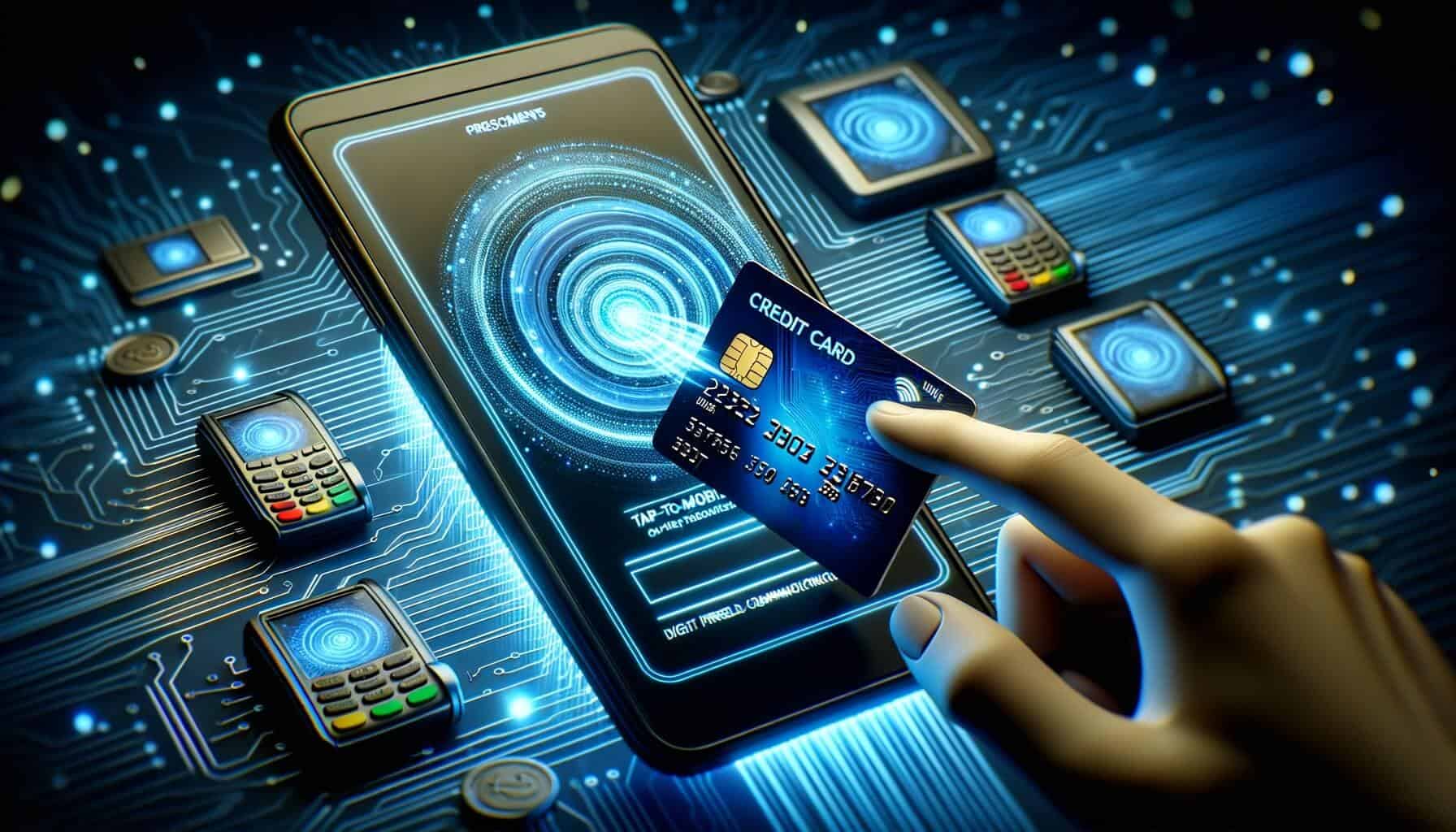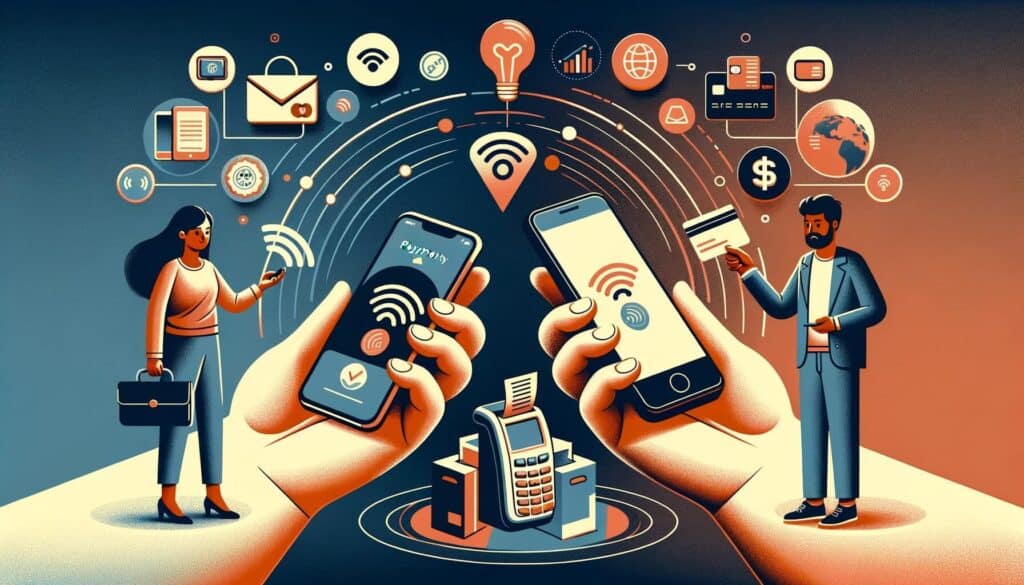
By Harriet Forster January 16, 2025
Tap-to-Mobile, also known as Tap-to-Phone, is a revolutionary technology that allows businesses to accept contactless payments directly on their mobile devices. With the rise of smartphones and the increasing popularity of contactless payments, Tap-to-Mobile has emerged as a convenient and secure solution for businesses of all sizes.
In this article, we will explore the ins and outs of Tap-to-Mobile technology, how it works, its benefits and advantages, a comparison with traditional payment methods, security measures and concerns, its implementation in various industries, future trends and innovations, and address frequently asked questions.
How Does Tap-to-Mobile Work?
Tap-to-Mobile technology leverages Near Field Communication (NFC) capabilities present in most modern smartphones. NFC enables two devices to establish communication by simply bringing them close together. In the context of Tap to Mobile, the customer’s contactless payment card or mobile wallet is tapped or waved near the merchant’s smartphone or tablet, initiating the payment process.
The merchant’s device acts as a virtual payment terminal, securely transmitting the payment information to the payment processor for authorization. Once the transaction is approved, the customer receives a confirmation, and the payment is processed.
To enable Tap to Mobile payments, merchants need to download a compatible mobile payment app or software onto their smartphones or tablets. These apps typically provide a user-friendly interface for managing transactions, generating receipts, and tracking sales.
Additionally, merchants may need to obtain a compatible card reader or NFC-enabled device to facilitate the communication between the customer’s payment card or mobile wallet and their smartphone.
Benefits and Advantages of Tap-to-Mobile Technology

Tap-to-Mobile technology offers numerous benefits and advantages for both businesses and customers. Let’s explore some of the key advantages:
1. Convenience: Tap-to-Mobile eliminates the need for physical payment terminals or dedicated hardware, allowing businesses to accept payments anywhere, anytime. This convenience is particularly beneficial for small businesses, pop-up shops, and service providers who operate on the go.
2. Cost Savings: By leveraging existing smartphones or tablets, businesses can avoid the upfront costs associated with traditional payment terminals. Additionally, Tap to Mobile eliminates the need for paper receipts, reducing printing costs and environmental impact.
3. Enhanced Customer Experience: With Tap to Mobile, customers can enjoy a seamless and frictionless payment experience. They no longer need to carry physical payment cards or worry about entering PINs or signing receipts. The simplicity and speed of Tap to Mobile payments contribute to a positive customer experience.
4. Increased Sales Opportunities: Tap-to-Mobile enables businesses to accept payments from customers who prefer contactless payment methods. As contactless payments gain popularity, offering this option can attract new customers and increase sales.
5. Real-Time Reporting and Analytics: Many Tap to Mobile apps and software provide real-time reporting and analytics features. Merchants can access detailed transaction data, track sales trends, and gain valuable insights into their business performance.
Tap-to-Mobile vs. Traditional Payment Methods: A Comparison

When comparing Tap-to-Mobile with traditional payment methods, several factors come into play. Let’s examine some of the key differences:
1. Mobility and Flexibility: Traditional payment methods require businesses to have dedicated payment terminals or hardware, limiting their mobility and flexibility. Tap to Mobile, on the other hand, allows businesses to accept payments using their smartphones or tablets, providing unparalleled mobility and flexibility.
2. Cost: Traditional payment terminals can be expensive, especially for small businesses or startups. Tap-to-Mobile eliminates the need for dedicated hardware, significantly reducing upfront costs.
3. Setup and Maintenance: Setting up and maintaining traditional payment terminals can be time-consuming and complex. Tap to Mobile, on the other hand, typically involves downloading a mobile app and obtaining a compatible card reader, making the setup process relatively simple.
4. Security: Both Tap-to-Mobile and traditional payment methods prioritize security. However, Tap to Mobile offers additional security features such as tokenization, which replaces sensitive payment card data with unique tokens, reducing the risk of data breaches.
5. Customer Experience: Tap-to-Mobile provides a more streamlined and convenient payment experience for customers. Traditional payment methods often involve entering PINs, signing receipts, or waiting for paper receipts, which can be time-consuming and cumbersome.
Security Measures and Concerns with Tap-to-Mobile

While Tap-to-Mobile technology offers enhanced convenience and flexibility, security remains a top priority. To ensure the safety of transactions, several security measures are implemented:
1. Encryption: Tap-to-Mobile transactions are encrypted, ensuring that payment data is securely transmitted between the customer’s device and the merchant’s smartphone or tablet.
2. Tokenization: Tap-to-Mobile utilizes tokenization, a process that replaces sensitive payment card data with unique tokens. This adds an extra layer of security by preventing the exposure of actual card details during the transaction process.
3. Two-Factor Authentication: Some Tap to Mobile apps may require two-factor authentication, adding an extra layer of security by verifying the user’s identity through a combination of something they know (e.g., a password) and something they have (e.g., their smartphone).
4. Fraud Detection and Prevention: Tap-to-Mobile apps often incorporate advanced fraud detection and prevention mechanisms to identify and mitigate potential fraudulent transactions. These mechanisms may include machine learning algorithms, transaction monitoring, and anomaly detection.
Despite these security measures, some concerns exist regarding Tap to Mobile technology. One concern is the potential for unauthorized access to the merchant’s smartphone or tablet, which could compromise payment data. To mitigate this risk, merchants should ensure their devices are protected with strong passwords or biometric authentication methods. Additionally, regular software updates and security patches should be applied to minimize vulnerabilities.
Implementing Tap-to-Mobile in Various Industries
Tap-to-Mobile technology has the potential to transform payment processes across various industries. Let’s explore how Tap-to-Mobile can be implemented in some key sectors:
1. Retail: Tap-to-Mobile enables retailers to offer a seamless and convenient payment experience to their customers. Whether it’s a large department store or a small boutique, Tap to Mobile allows retailers to accept payments anywhere in the store, reducing checkout queues and enhancing customer satisfaction.
2. Hospitality: In the hospitality industry, Tap-to-Mobile can streamline the payment process for hotels, restaurants, and cafes. Waitstaff can bring the payment terminal directly to the customer’s table, allowing for quick and contactless payments. This improves table turnover and enhances the overall dining experience.
3. Transportation: Tap-to-Mobile can be implemented in the transportation sector, enabling passengers to make contactless payments for tickets or fares. Whether it’s public transportation, taxis, or rideshare services, Tap to Mobile simplifies the payment process and reduces the need for cash transactions.
4. Healthcare: Tap-to-Mobile can be utilized in healthcare settings, allowing patients to make contactless payments for medical services or prescriptions. This eliminates the need for patients to carry cash or physical payment cards, enhancing convenience and reducing administrative burdens.
5. Events and Entertainment: Tap to Mobile can revolutionize the payment experience at events and entertainment venues. Whether it’s concerts, festivals, or sporting events, attendees can make quick and secure payments for tickets, merchandise, and concessions using their smartphones.
Future Trends and Innovations in Tap-to-Mobile Technology
As Tap-to-Mobile technology continues to evolve, several future trends and innovations are expected to shape its development. Let’s explore some of these trends:
1. Biometric Authentication: The integration of biometric authentication methods, such as fingerprint or facial recognition, can enhance the security and convenience of Tap to Mobile payments. Biometric authentication provides an additional layer of identity verification, reducing the risk of unauthorized transactions.
2. Wearable Devices: The rise of wearable devices, such as smartwatches and fitness trackers, presents an opportunity for Tap-to-Mobile technology. Integrating Tap to Mobile capabilities into wearable devices can further simplify the payment process, allowing users to make payments directly from their wrists.
3. Internet of Things (IoT) Integration: The integration of Tap-to-Mobile with IoT devices can enable seamless and automated payments. For example, a smart refrigerator equipped with Tap to Mobile capabilities could automatically reorder groceries and process payments when items are running low.
4. Enhanced Analytics and Personalization: Future Tap to Mobile solutions are expected to provide more advanced analytics and personalization features. Merchants can leverage transaction data to gain insights into customer preferences, enabling targeted marketing campaigns and personalized offers.
5. Blockchain Integration: The integration of blockchain technology can enhance the security and transparency of Tap-to-Mobile transactions. Blockchain’s decentralized nature and cryptographic algorithms can provide an additional layer of trust and immutability to the payment process.
Frequently Asked Questions (FAQs)
Q1. Is Tap-to-Mobile secure?
Yes, Tap-to-Mobile transactions are secure. They utilize encryption, tokenization, and other security measures to protect payment data.
Q2. Can Tap-to-Mobile be used with any smartphone?
Tap-to-Mobile requires NFC capabilities, which are present in most modern smartphones. However, older or budget smartphones may not support Tap to Mobile.
Q3. Do customers need to install a specific app to use Tap-to-Mobile?
Customers can use Tap to Mobile with their mobile wallets, such as Apple Pay or Google Pay. They may need to set up their mobile wallet and add their payment cards before using Tap to Mobile.
Q4. Can Tap-to-Mobile be used for online purchases?
Tap-to-Mobile is primarily designed for in-person transactions. However, some online merchants may offer Tap to Mobile as a payment option through their mobile apps.
Q5. Are there any transaction limits for Tap-to-Mobile payments?
Transaction limits may vary depending on the payment processor, the customer’s bank, or the merchant’s agreement. Some countries or regions may have specific regulations regarding transaction limits for contactless payments.
Conclusion
Tap-to-Mobile (Tap-to-Phone) technology has emerged as a game-changer in the world of payments. Its convenience, cost savings, enhanced customer experience, and real-time reporting make it an attractive option for businesses of all sizes. While security measures are in place to protect transactions, it is essential for merchants to stay vigilant and implement best practices to mitigate potential risks.
As Tap to Mobile continues to evolve, future trends and innovations, such as biometric authentication and IoT integration, hold the promise of further enhancing the payment experience. With its numerous benefits and advantages, Tap to Mobile is poised to shape the future of payments across various industries.